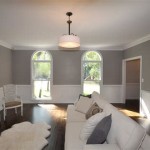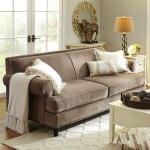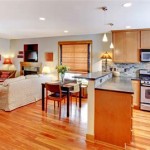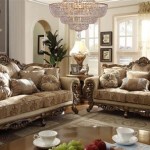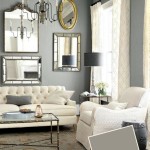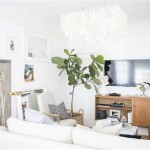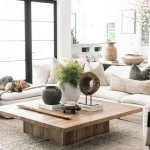Long End Tables for Living Room: Functionality and Aesthetics
Long end tables represent a versatile and increasingly popular furniture choice for living rooms. Their extended surface area offers practical solutions for storage, display, and accessibility, while simultaneously contributing to the overall aesthetic appeal of the space. Understanding the benefits, design considerations, and material options associated with long end tables is essential for making an informed purchase that complements existing décor and meets specific functional needs.
The term "long end table" typically refers to a table positioned at the end of a sofa or between seating arrangements that exhibits a significantly elongated horizontal surface compared to standard end tables. This extended length provides functionality beyond simply holding a lamp or a beverage; it can accommodate multiple items, serve as a buffer between furniture pieces, or even function as a makeshift console table in smaller living spaces.
Enhanced Functionality and Versatility
The primary advantage of a long end table lies in its increased functionality. The extended surface area allows for the convenient placement of multiple items, minimizing clutter and maximizing accessibility. Users can strategically position items such as lamps, books, remote controls, decorative objects, and even small electronic devices without compromising on space or creating a disorganized appearance.
Many long end tables incorporate additional features to further enhance their practicality. Drawers provide concealed storage for smaller items like magazines, chargers, or personal belongings, helping to maintain a tidy and organized living room. Shelves offer open storage for books, decorative baskets, or displaying collectibles, adding visual interest and functionality. Some designs even include built-in power outlets or USB ports, providing convenient charging solutions for electronic devices.
Beyond storage, long end tables can also serve as transitional pieces, bridging the gap between different seating areas or defining specific zones within a larger living room. Placed strategically between a sofa and an armchair, for instance, a long end table can visually connect the two pieces while providing a shared surface for drinks, snacks, or reading materials. This creates a more cohesive and inviting seating arrangement.
The versatility of long end tables also extends to their adaptability in different living room layouts. In smaller spaces, a long end table can effectively double as a console table, providing a surface for displaying artwork, photographs, or other decorative items. In larger living rooms, multiple long end tables can be used in conjunction to create a visually balanced and functional arrangement.
Design Considerations and Aesthetic Integration
Selecting a long end table involves careful consideration of design elements to ensure it complements the existing décor and enhances the overall aesthetic of the living room. Style, material, color, and size are all crucial factors in achieving a harmonious and visually appealing result.
The style of the long end table should align with the overarching design theme of the living room. Modern and minimalist interiors often benefit from sleek, geometric designs with clean lines and understated finishes. Traditional living rooms may require more ornate tables with carved details, turned legs, or rich wood tones. Mid-century modern spaces often incorporate tables with tapered legs, organic shapes, and walnut or teak finishes. Industrial-style living rooms can be enhanced by long end tables constructed from metal and reclaimed wood, featuring exposed hardware and a rustic aesthetic.
Material selection plays a significant role in both the visual appearance and the durability of the long end table. Wood is a classic and versatile choice, offering a range of finishes and grains to suit different styles. Metal provides a more contemporary and industrial look, while glass can create a sense of lightness and transparency. Stone or marble tops add a touch of luxury and sophistication. The choice of material should be carefully considered in relation to the existing furniture and décor, as well as the desired level of maintenance and longevity.
Color is another important design consideration. A long end table can either blend seamlessly with the surrounding furniture or serve as a contrasting accent piece. Neutral colors like white, black, gray, or beige offer versatility and can be easily integrated into various design schemes. Bold or vibrant colors can add a pop of personality and visual interest, but should be used judiciously to avoid overwhelming the space. The color of the table should complement the existing color palette of the living room, including the walls, flooring, and other furniture pieces.
Size is a critical factor in ensuring that the long end table is both functional and aesthetically pleasing. The height of the table should be approximately level with the armrests of the adjacent sofa or chairs, allowing for easy access to items placed on the surface. The length of the table should be proportionate to the length of the sofa or the distance between seating arrangements. A table that is too small may appear insignificant, while a table that is too large can overwhelm the space. Careful measurement and planning are essential to ensure a balanced and harmonious result.
Material Options and Build Quality
The choice of materials for a long end table not only impacts its aesthetic appeal but also its durability, maintenance requirements, and overall longevity. Selecting high-quality materials and paying attention to build quality ensures that the table will withstand regular use and maintain its appearance over time.
Solid wood is a popular choice for long end tables, offering durability, natural beauty, and a timeless appeal. Different types of wood, such as oak, maple, cherry, walnut, and mahogany, possess distinct grain patterns, colors, and hardness levels. Hardwoods are generally more durable and resistant to scratches and dents than softwoods. The wood should be properly seasoned and kiln-dried to prevent warping or cracking. Solid wood tables can be finished with a variety of stains, paints, or clear coats to enhance their appearance and protect the surface.
Engineered wood, such as plywood or MDF (medium-density fiberboard), is another common material used in the construction of long end tables. Engineered wood is often more affordable than solid wood and can be manufactured with consistent dimensions and smooth surfaces. High-quality engineered wood is typically covered with a veneer or laminate to provide a realistic wood grain appearance and protect the core material from moisture and damage. The edges of the table should be properly sealed to prevent chipping or peeling.
Metal is a durable and versatile material that can be used to create a wide range of long end table designs, from sleek and modern to industrial and rustic. Steel, iron, and aluminum are common metal options, each with its unique properties. Steel is strong and durable, while aluminum is lightweight and resistant to corrosion. Metal tables are often finished with powder coating, paint, or other protective coatings to prevent rusting and scratching. The welding and joints should be strong and seamless to ensure structural integrity.
Glass is often used for the tops of long end tables, adding a touch of elegance and creating a sense of lightness. Tempered glass is a safer and more durable option than standard glass, as it is less likely to shatter upon impact. The edges of the glass should be smooth and polished to prevent cuts or injuries. The glass top should be securely attached to the base of the table using appropriate hardware and adhesives.
Stone or marble tops can add a luxurious and sophisticated touch to long end tables. Natural stone materials are durable and resistant to heat and scratches, but they can also be porous and require sealing to prevent staining. The stone should be properly polished and sealed to enhance its appearance and protect the surface. The base of the table should be strong enough to support the weight of the stone top.
The build quality of a long end table is just as important as the materials used in its construction. Look for tables with sturdy frames, well-attached legs, smooth drawers, and durable finishes. Check the joints and connections to ensure they are tight and secure. Inspect the surfaces for any imperfections or flaws. Investing in a well-built long end table will ensure that it lasts for many years to come.

Byblight Kerlin 26 In Brown Rectangle Mdf End Table With Storage 3 Tier Narrow Side For Living Room Nightstand Bedroom Bb Jw0718xf

Litton Lane 26 In Brown 2 Shelves Large Square Wood End Accent Table 85998

Living Room Makeover Stacked Trunk End Table Liz Marie Blog

Byblight Kerlin 2pcs 27 56in Walnut Rectangle Wood End Table Narrow Sofa Side With 2 Tier Shelves For Living Room Bedroom Bb Hl0109hyx2

End Tables All Living Room Furniture Pottery Barn
.jpg?strip=all)
Styling Two Matching Sofa End Tables Dream Green Diy

The Ultimate Guide To Decorating With Side Tables And End

White Farmhouse End Table Liz Marie Blog

3 Piece Coffee Table Set Occasional Living Room 2 End Side Tables Ebay

Linsy Home End Tables For Living Room With Charging Station Nightstand Bedroom Drawer And Detachable Holder Brown

